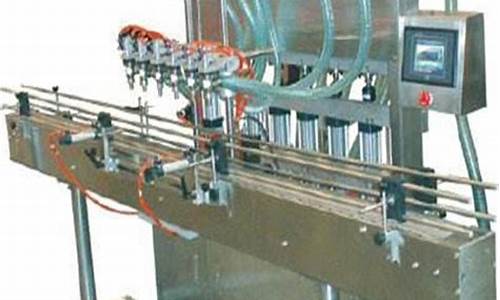The evolution of liquid filling equipment is a fascinating journey that reflects broader technological advancements and industrial needs. From rudimentary manual systems to sophisticated automated machinery, this equipment has significantly transformed how liquids are packaged and distributed. This article explores the development of liquid filling equipment, highlighting key milestones and technological innovations that have shaped the industry.
The Beginnings: Manual Filling Systems
In the early days of liquid packaging, manual filling systems were the norm. These systems relied heavily on human labor to ensure that each container was filled accurately. Manual fillers typically used simple tools like ladles and gravity-fed funnels to transfer liquid into bottles or cans. While effective for small-scale production, these methods were time-consuming and prone to inconsistencies. The need for more efficient and reliable solutions became apparent as businesses grew and production demands increased.
Introduction of Semi-Automatic Fillers
The next major advancement came with the introduction of semi-automatic fillers. These systems marked a significant shift from manual processes to more mechanized operations. Semi-automatic fillers often incorporated basic automation elements such as pneumatic controls and adjustable filling nozzles, which improved accuracy and speed.

Despite their advantages, semi-automatic fillers still required human intervention for tasks such as loading and unloading containers. However, they laid the groundwork for more advanced systems by demonstrating the potential of automation in liquid filling.
The Rise of Fully Automatic Filling Systems
The evolution continued with the development of fully automatic filling systems. These advanced machines are capable of handling the entire filling process with minimal human involvement. Modern automatic fillers utilize sophisticated technologies, including servo motors, advanced sensors, and programmable logic controllers (PLCs), to achieve high precision and efficiency. These systems can handle a wide range of liquids, from thin water-like substances to thick, viscous products, making them versatile tools for various industries.
Fully automatic systems also offer significant improvements in speed and consistency. They are designed to integrate seamlessly with other production line components, such as capping and labeling machines, creating a cohesive and streamlined packaging process. Additionally, many modern filling systems come equipped with advanced features like self-cleaning mechanisms and error detection systems, further enhancing their reliability and ease of use.
In summary, the evolution of liquid filling equipment reflects a broader trend towards increased automation and efficiency in manufacturing processes. From manual fillers to cutting-edge automatic systems, each stage of development has contributed to more precise, faster, and reliable liquid packaging solutions. Understanding this evolution not only highlights the technological progress in the industry but also underscores the ongoing pursuit of innovation to meet the growing demands of modern production and distribution.






























